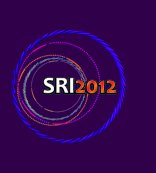Mr
Matthew Hart
(STFC)
06/07/2012, 16:00
XFEL detectors
We present the latest status of the Large Pixel Detector (LPD) research and development program. The LPD is being developed by STFCs Detector Systems Centre for The European XFEL. To match the properties of the XFEL machine this detector system must be capable of operating with a high frame rate (4.5MHz), large dynamic range (1e^5 photons), while maintaining low noise (~1 photon). The system...
Aldo Mozzanica
(Paul Scherrer Institut)
06/07/2012, 16:25
XFEL detectors
1D and 2D detectors based on charge integrating readout with automatic gain switching logic are being developed at PSI.
The systems are designed to provide a dynamic range of 10^4 12keV photons, single photon resolution down to a photon energy of a few keV and a noise lower than 200 e.n.c..
The GOTTHARD 1D miscrostrip detector module, which is under commissioning, is composed of a printed...
Dr
Takaki Hatsui
(RIKEN)
06/07/2012, 16:50
XFEL detectors
On behalf of SOPHIAS collaboration
SPring-8 Angstrom Compact free-electron LAser (SACLA), which is the second X-ray free-electron laser (XFEL) facility after LCLS at SLAC National Accelerator Laboratory achieved laser amplification on June 7th, 2011. In the first user run of SACLA starting in March 2012, 25 proposals from domestic/international institutions will be conducted, where more...
Dr
Chris Kenney
(SLAC National Accelerator Lab)
06/07/2012, 17:15
XFEL detectors
The LCLS (Linac Coherent Light Source) offers unique opportunities for photon science. To take full advantage of this, a corresponding suite of detectors must be made available to scientists. Progress towards this goal will be presented along with experience gained from operating within the LCLS environment. Specific topics such as radiation damage will be addressed. The status of currently...
Dr
Lothar Strüder
(MPE, Semiconductor Laboratory)
06/07/2012, 17:40
XFEL detectors
Fourth generation accelerator-based light sources, such as EUV and X-ray Free Electron Lasers (XFELs), deliver ultra-brilliant (~1012-1013 photons per bunch) coherent radiation in femtosecond (~10 fs to 100 fs) pulses and, thus, require novel focal plane instrumentation in order to fully exploit their unique capabilities. As an additional challenge for detection devices, existing XFELs...

